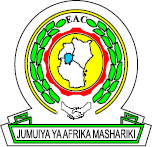
In order to promote public education and public safety, equal justice for all, a better informed citizenry, the rule of law, world trade and world peace, this legal document is hereby made available on a noncommercial basis, as it is the right of all humans to know and speak the laws that govern them.

EAS22:2006
ICS 67.100
EAST AFRICAN COMMUNITY
© EAC 2006
Second Edition 2006
vDevelopment of the East African Standards has been necessitated by the need for harmonizing requirements governing quality of products and services in the East African Community. It is envisaged that through harmonized standardization, trade barriers that are encountered when goods and services are exchanged within the Community will be removed.
In order to achieve this objective, the Community established an East African Standards Committee mandated to develop and issue East African Standards.
The Committee is composed of representatives of the National Standards Bodies in Partner States, together with the representatives from the private sectors and consumer organizations. Draft East African Standards are circulated to stakeholders through the National Standards Bodies in the Partner States. The comments received are discussed and incorporated before finalization of standards, in accordance with the procedures of the Community.
East African Standards are subject to review, to keep pace with technological advances. Users of the East African Standards are therefore expected to ensure that they always have the latest versions of the standards they are implementing.
© East African Community 2006 – All rights reserved*
East African Community
P.O. Box 1096
Arusha
Tanzania
Tel: 255 27 2504253/8
Fax: 255 27 2504255
E-mail: eac@eachq.org
Web: www.eachq.org
* © 2006 EAC — All rights of exploitation of any form and by any means reserved worldwide for EAC Partner States’ NSBs
viButter — Specification
This East African Standard specifies requirements and methods of sampling and test for butter intended for direct consumption or for further processing.
This East African Standard does not apply to butter derived from milk other than cow milk.
The following standards contain provisions, which, through reference in this text constitute provisions of this standard. All standards are subject to revision and parties to agreements based on this standard are encouraged to take steps to ensure the use of the most recent editions of the standard indicated below. Information on currently valid national and international standards may be obtained from the Partner States Bureaux of Standards Information and Documentation Centre.
CAC/RCP 57, Code of hygienic practice for milk and milk products
EAS 38, Labelling of pre-packaged foods
EAS 68, Milk and milk products — Methods of microbiological examination
EAS 80, Butter ⎯ Methods of analysis
ISO 707, Milk and milk products — Guidance on sampling
ISO 6785, Milk and milk products — Detection of Salmonella spp.
ISO 11866, Milk and milk products — Enumeration of presumptive Escherichia coli
For the purpose of this East African Standard the following definition shall apply:
butter
fatty product derived exclusively from milk and/or products obtained from milk, principally in the form of an emulsion of the type water-in-oil
Butter shall be made exclusively from milk and/or products obtained from cow milk.
Sodium chloride and food grade salt
Cultures of harmless (non-pathogenic) lactic acid producing bacteria
Potable water
The compositional requirement for butter shall be as given in Table 1.
| Parameter | Requirement | Method of test |
|---|---|---|
| Minimum milk fat content, %, m/m | 80 | |
| Maximum milk solids-not-fat content, %, m/m | 2 | EAS 81 |
| Maximum water content, %, m/m | 16 |
The finished product shall be of characteristic flavour, free from taint and rancidity.
The product shall be firm, neither greasy nor oily at 25 °C and showing granular texture on breaking.
Only those food additives listed below may be used and only within the limits specified.
2| INS No. | Name | Maximum Level |
|---|---|---|
| Colours | ||
| 160a(i) | β-Carotene (synthetic) | 25 mg/kg |
| 160a(ii) | Carotenes (natural extracts) | 600 mg/kg |
| 160b | Annatto extracts | 20 mg/kg (bixin/norbixin basis) |
| 160e | β-apo-Carotenal | 35 mg/kg |
| 160f | β-apo-8’-Carotenoic acid, methyl or ethyl ester | 35 mg/kg |
| Acidity Regulators | ||
| 339 | Sodium phosphates | 2 g/kg |
| 500(i) | Sodium carbonate | Limited by GMP |
| 500(ii) | Sodium hydrogen carbonate | Limited by GMP |
| 524 | Sodium hydroxide | Limited by GMP |
| 526 | Calcium hydroxide | Limited by GMP |
The products covered by this Standard shall comply with the maximum limits established by the Codex Alimentarius Commission.
The products covered by this Standard shall comply with the maximum residue limits established by the Codex Alimentarius Commission.
Butter shall be produced, processed and handled in accordance with CAC/RCP 57.
3The microbiological limits for butter shall be as given in Table 2.
| Microorganism | Maximum limit | Method of test |
|---|---|---|
| Total count | 105 | EAS 68 |
| E. coli | Absent in 1 g | ISO 11866 |
| Salmonella | Absent in 25 g | ISO 6785 |
| Moulds and yeasts | 10 per g | EAS 68 |
Butter shall be packaged in safe food grade containers and/or suitably treated paper.
In addition to the requirements of EAS 38, the following specific provisions apply:
Sampling of butter for analysis shall be done in accordance with ISO 707.
The tests shall be carried out in accordance with EAS 80.
4